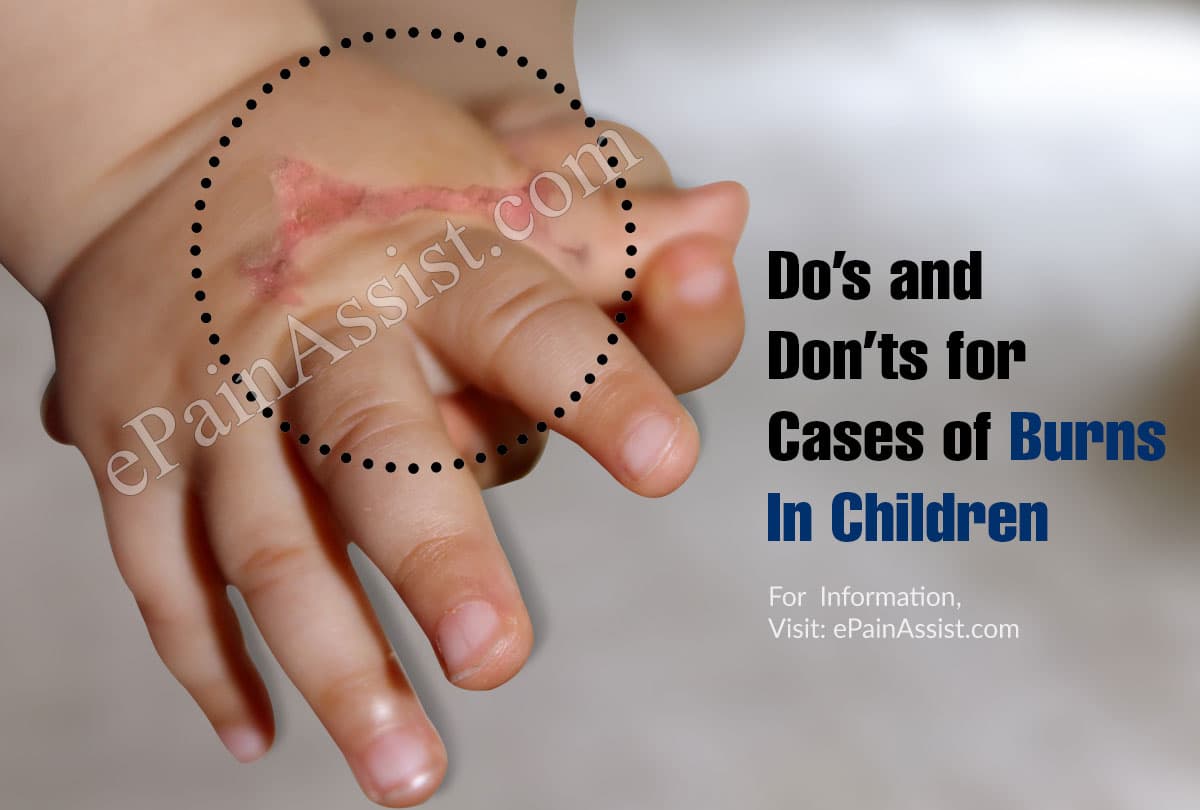Burn Injuries in children have emerged as a major challenge for pediatricians as they constitute a large chunk of fatalities among children around the world. How to manage burn injuries in children is quite a tough task for pediatricians. This is because the body of a child works differently than that of an adult. There are certain processes in children that require special attention especially after a burn injury. Children require significantly more energy than adults as they tend to be more active. The metabolic rate of children is also very high and they require more fluids and electrolytes for normal functioning [1].
All these uniqueness of children should be taken into consideration when determining the management of a child with burn injuries. Children tend to get burn injuries due to various reasons. Amongst them scald injuries where children accidentally pour hot fluid on to themselves and burn the area. In some cases, children tend to get burn injuries when the water in the bathtub gets excessively heated and a child unknowingly enters the bathtub. It is usually a negligence injury where the child is left unattended [1].
Children who are older than 6 years of age usually get burn injuries while trying to put something or take something out of the gas stone with the stove on. These are termed as flame injuries. The most common all the reasons for burn injuries in children are firecracker injuries and burn injuries due to the residence facility being on fire. The most important thing that is essential for every parent and caregiver to know are the dos and don’ts of burn injuries in children and this is what has been explained in the article below [1].

Do’s and Don’ts for Cases of Burns In Children
Treatment and management of children who have suffered burn injuries requires special care and skill on the part of the physician. The physician should have in depth knowledge of the difference in treatment of burns between children and adults. The body mass ration of children and adults is 3:1 meaning that children have three times more body mass area than adults [1].
Additionally, loss of fluids in a child is much more than an adult which requires greater need of fluids in children when compared to adults. The increased body mass ratio of the child when compared to adults predisposes them to a condition called hypothermia which is something that needs to be avoided when managing burn injuries in children [1].
Also, children who are less than 2 years of age have very thin layer of outer skin and the subcutaneous tissue is also extremely thin than adolescents and adults making them lose heat quickly than adults. Keeping all these things in mind, certain dos and don’ts need to be followed when treating burn injuries in children. These dos and don’ts include [1]:
Dos:
Before taking the child to the emergency room in cases where there is significant burn injury the child should be first removed from the source of the burn. The next step is to wash the area with tap water thoroughly. Now, apply some antiseptic ointment like Betadine on the area of the injury. If the child is complaining of pain then an over the counter pain medicine can be given [2].
If the area of the burn is oozing then it is always better to wrap the area with sterile gauze. If gauze is not available then the injury site can be wrapped with a clean and dry towel. The child should then be taken to the nearest emergency room where the severity of the burn can be assessed and proper treatment management can ensue [2].
Don’ts:
There are some strategies which people generally try for burn injuries in children which can worsen the injury and make the picture more complicated. It is advised and recommended never to apply toothpaste, coffee or turmeric to the area of the injury as they all can cause infection [2].
Additionally, it is advised not to apply grease, powder, or butter to the area as these can also worsen the injury. Never wrap the area with a dirty cloth as the contaminated fabric may allow bacteria to creep into the skin and cause serious infection [2].
In conclusion, Burn injuries in Children can occur due to negligence on the part of both the parent and the child. The most common cause of a burn in a child is through pouring hot fluid on themselves or a firecracker injury. Taking the child to the emergency room to assess the extent of damage cause due to the injury should be the first priority [1, 2].
However, there are certain dos and don’ts which should be adhered to beforehand. The above listed dos and don’ts are quite comprehensive and if adhered to can keep the complications to a minimum and the child can return back to normal life in the minimal possible time [2].
Also Read:
- Burning Mouth Syndrome: Causes, Risk Factors, Symptoms, Treatment, Lifestyle Modifications
- What Can Cause Burning Back Pain?
- What Can Cause Burning Pain In Stomach?
- What Can Cause Burning Chest Pain and How Is It Treated?
- Burnout: Causes, Signs, Symptoms, Prevention, Recovery
- Burning Throat: What Can Cause Burning Sensation in Throat?
- What Should You do After Getting a Turf Burn?
